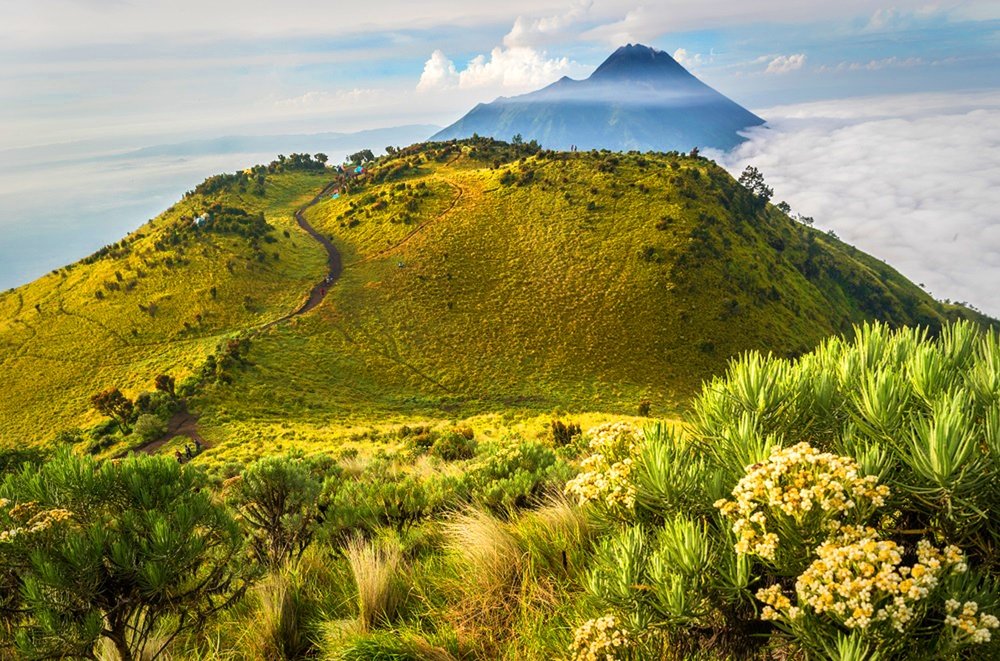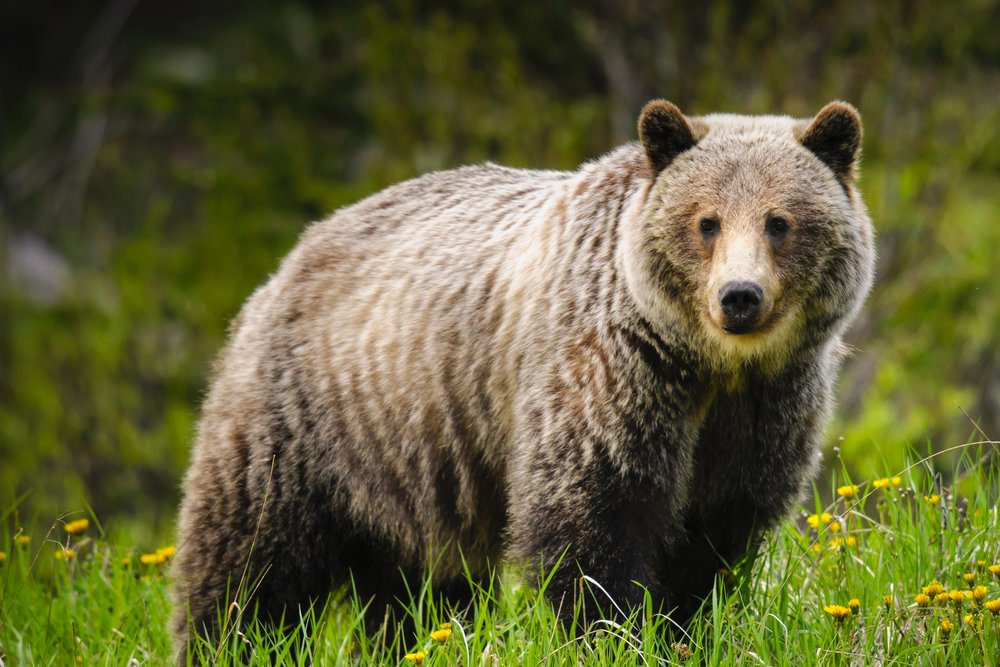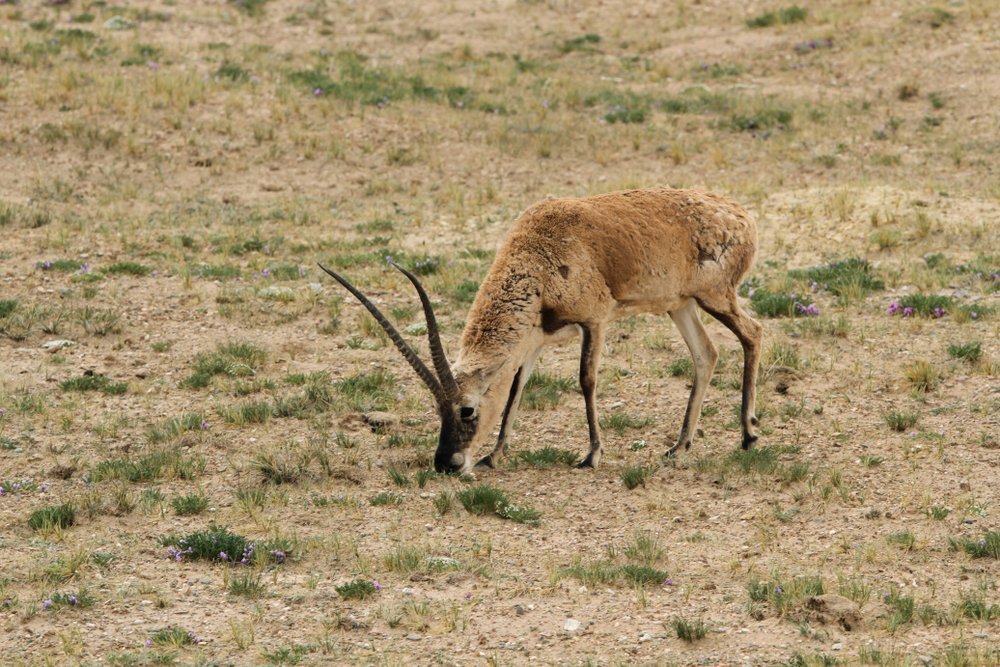Have you ever wondered that What animals live in the Mountains? Mountains have always piqued the interest of ecologists and wildlife experts due to their distinct form of life. Have you ever wondered “what kinds of creatures can be found in the mountains?” Mountain animals have evolved particular adaptations to survive in a cold, windy environment.
This could mean more body fat or thicker outerwear with insulating inner layers. During the winter, some mountain animals hibernate, while others migrate to lower elevations.
To breathe in the same amount of oxygen as if you were at sea level, you would need to breathe more air at 3,000 meters/10,000 feet. Few animals can live on a mountain because the weather is generally cold and windy. As a reason, mountain animals frequently have particular adaptations to cope with the severe environment.
The snow leopard, bighorn sheep, Andean condor, chamois, mountain gorilla, mountain goat, chinchilla, golden eagle, alpine marmot, Himalayan Tahr, lynx, Vicuña, and ibex are some examples of mountain animals.
To comprehend mountain biodiversity, one must first understand the various mountain zones, which are classified according to the height above sea level and latitude. Each mountain zone is characterized by unique flora and fauna.
Table of Contents
Altitudinal divisions of mountain
Mountains have a cooler climate, which has an impact on the flora and fauna that live there. A specific group of plants and animals are adapted to a small range of climate conditions. As a result, ecosystems prefer to cluster along with elevation bands with similar climates.
Altitudinal zonation is the term for this. The inclination of mountains to have higher precipitation and lower temperatures in dry areas gives for varied environments which improve zone inhibition.
Because the conditions above and below a given zone are unfriendly, some plants and animals found in altitudinal zones tend to become isolated, limiting their migration and spread. Sky islands are ecological systems that are isolated from the rest of the world.
What Animals Live In The Mountains? Mountain Zones

The pattern of altitudinal zones is quite consistent. Trees cannot grow at such high altitudes, and any life that does exist will be alpine in nature, resembling tundra. Subalpine forests of needle-shaped leaf trees, which can tolerate cold, dry conditions, can be found just below the tree line.
Montane forests grow beneath that. Those woods tend to be needle-shaped leaf trees in temperate areas of the world, whereas broadleaf trees grow in a rainforest in the tropics.
The Himalaya-Tibet region has the world’s largest and highest mountain range. Mountain ranges in Europe (Alps, Pyrenees), New Guinea, Asia (Caucasus, Urals), East Africa, and New Zealand are among the most notable. Each of these zones and regimes has its own range of life.
Mountain Ecology
In mountainous areas, altitudinal zonation (also known as elevational zonation) refers to the Natural layering of habitats that develops as a result of varying environmental circumstances at different elevations.
Humidity, solar radiation, temperature, and soil composition, all contribute to the formation of altitudinal zones, which support a diverse range of plant and animal life. The concept of altitudinal zonation was introduced by Alexander von Humboldt, who discovered that temperature declines as altitude rises.
Marine ecosystems, also have altitudinal zoning. Changes in flora and fauna in elevation map onto changes expected with greater latitude in Merriam and Stejneger’s notion of life zones, which they discovered in 1890. Altitudinal zonation is a key idea in mountain studies today.
Correlation between wildlife and elevation zones

Animals also have zonation patterns that correspond to the above-mentioned vegetational zones. Invertebrates have more well-defined zones than vertebrate species because they are less mobile.
Seasons and food availability often cause vertebrate animals to move across altitudinal zones. Because of the harsher climatic conditions found above the montane zone, fauna and its density typically decline with the increase in elevation above the montane zone.
The elevations of a single zone are not bound to a single elevation because of the reasons stated above, which complicate elevation models of zonation. The altitudinal gradient can be divided into five primary zones, which ecologists refer to by different names.
- Nival level: This level contains glaciers, Snow-covered for the majority of the year. Only a few species live on the surface of the soil, therefore vegetation is extremely limited. The naval level is too severe for superior wildlife: the Alpine chough and the wallcreeper can be seen in the summer.
- Alpine level: This zone lies between the timberline and the snow line. Sub-Nival and Treeless Alpine are two sub-zones of this zone
- Montane level: Extends to the timberline from the mid-elevation forests. The exact location of the tree line varies depending on the environment. This region is marked by montane rainforest in the tropics at 3000 ft elevation, whereas coniferous woods predominate at higher latitudes. This region supports a diversity of birds and mammals i.e. cheer pheasant, monal pheasant, koklass, jaguars and panthers, etc.
- Lowland level: The lowest part of the mountains varies greatly based on the temperature and is known by a variety of names depending on the surrounding scenery. It may be of scrub dense vegetation, Rocky Mountains, or deserts. Catamount, Urial, jaguars and can be found in this zone
Mountain Fauna
The fauna of the mountains is less distinct than the flora of the same areas, and it usually represents the fauna of the region. Deer, bears, wolves, and many huge cats, for example, are among the major mammals of North American mountain lands, all of which live, or did before the human invasion, in the surrounding territories beyond the mountains.
Condors of California’s upper ranges and the Andes, for example, are endemic to mountain ecosystems. Flightless insects such as grasshoppers are a feature of interest on certain mountains, a phenomenon that is especially noticeable on East African summits such as Kilimanjaro.
Mountain regions are sometimes referred to as “biodiversity hotspots” because of their various topographic and climatic settings, as well as the fact that the evolution of cold-adapted biota has often occurred independently on different mountains in the same area. The Caucasus Mountains in Asia are a well-known example, whereas the mountains of New Guinea in the tropics contribute significantly to an immense diversity of animals, including over 20,000 plant species that account for 10% of the world’s flora.
The top fifteen ultimate survivors of mountain regions located in various altitudinal zones are listed here.
1. Brown Bear (Ursus arctos)

The brown bear is a large mammal species found Across Asia, North America, Europe, the Middle East, and North Africa. It lives at the elevation of 5,000 m. The IUCN Red List most recently assessed the brown bear in 2016. Brown bear however is a species that is classified as Least Concern but its population is declining and under serious threat due to anthropogenic activities.
2. Himalayan Tahr (Hemitragus jemlahicus)
The Himalayan tahr, an even-toed ungulate, can be found in northern India, southern Tibet, Nepal, and western Bhutan. It inhibits at a height of 5,000 meters. The IUCN Red List has it listed as Near Threatened because its number is falling owing to poaching and habitat loss.
3. Lammergeier (Gypaetus barbatus)
It is also known as the bearded vulture distributed through the Middle East, Southern Europe, Northeastern China, and various areas of Africa. It inhibits up to 5,000 m above sea level but has been spotted at 7,500 meters. The IUCN Red List of Threatened Species most recently assessed as “near threatened” the Bearded Vulture in 2021. Criteria A2cde classifies Gypaetus barbatus as Near Threatened.
4. Tibetan sand fox (Vulpes ferrilata)
The Tibetan fox, also known as Tibetan sand fox, is a true fox species that is only found in the Ladakh plateau, high Tibetan Plateau, China, Nepal, Bhutan, and Sikkim, up to elevations of roughly 5,300 meters. The IUCN Red List classifies it as Least Concern due to its vast distribution across the habitat.
5. Himalayan Marmot (Marmota himalayana)
The Himalayan marmot is a species of marmot that lives in alpine grasslands in the Tibetan Plateau and Himalayas, distributed through China, India, Nepal, and Pakistan. It Lives at an elevation of 5,200 meters.Because of its extensive range and possibly high population, it is classified as Least Concern by the IUCN.
6. Kiang (Equus kiang)
The largest member of the Asinus subgenus is the kiang (Equus kiang). Its native territory is the Tibetan Plateau, where it can be found in montane and alpine meadows. Its current distribution is limited to the Tibetan plateau’s plains, Ladakh, Northern Nepal, Pakistan, and India.
Tibetan wild ass, khyang, and gorkhar are some common names used for this species. One source of inspiration for the unicorn is traveler reports of the kiang. It lives up to 5,400 m of elevation. Kiang was examined for the IUCN Red List for the first time in 2015. Kiang is a species that is classified as Least Concern.
7. Chiru (Pantholops hodgsonii)

The chiru, also known as Tibetan antelope, is native to the Tibetan plateau’s northeastern region. The majority of the population lives on the Chinese side of the border, with some strewn over India and Bhutan.
Just about 150,000 mature individuals are remaining in the wild. They are targeted for their underfur, which is incredibly soft, light, and warm.
The underfur is used to create luxurious shawls commonly known as “shahtoosh“. Even though shahtoosh products are subject to strict trade restrictions and are listed on the CITES list, there is still a market for these high-end items.
It Lives up to 5,500 meters above sea level. Chiru was assessed for The IUCN Red List for the first time in 2016. Tibetan antelope is a Near Threatened species.
8. Tibetan gazelle (Procapra picticaudata)
The Tibetan gazelle, commonly known as the goa (Procapra picticaudata), is an antelope that lives on the Tibetan plateau, distributed through China, India, and Bhutan. It lives up to 5,750 meters above sea level. This specie is also declared as near threatened by IUCN red list in 2016.
9. Yak (Bos mutus)
The Himalayan wild yak is big, wild cattle species distributed through India, Pakistan, and China. It Lives up to 6,100 meters above sea level. IUCN listed this species as Vulnerable due to excess hunting for meat.
10. Alpine Chough (Pyrrhocorax graculus)
The yellow-billed chough, sometimes known as the Alpine chough, is a crow-like bird distributed through Europe, Asia, and North Africa. It Lives at the elevation of 6,500 meters but has been spotted 8,200 m above sea level
11. Snow leopard (Panthera uncia),
The snow leopard is a Himalayan big cat native to Central and South Asia. It is classified as Vulnerable by the IUCN Red List because the global population is shrinking very fast. Infrastructure development raises concerns about poaching and habitat destruction. It can be found in alpine and subalpine zones ranging from 3,000 to 4,500 meters of elevation.
12. Markhor (Capra falconeri)

The markhor (Capra falconeri) is a huge Capra species that is found in Central Asia, the Karakoram, and the Himalayas. Since 2015, it has been categorized as Near Threatened on the IUCN Red List.
13. Catamounts (Puma concolor)
Catamount is also known as puma prefers Rocky Mountains and are expert at jumping. it has been categorized as least concern (population declining) on the IUCN Red List.
14. Urial (Ovis vignei)
Urial is commonly known as shapu distributed through Ladakh, India, China, and Pakistan, and prefers scrub forests and salt ranges at foothills. These species have unique importance as game animals. The population of Urial is vulnerable according to the IUCN red list of threatened species
15. Musk deer (Moschus moschiferus)
Musk deer are found primarily in dense forests and alpine scrub forests in South Asia’s mountains, particularly the Himalayas. The official term for this type of deer is Moschids. Rather than one, multiple species of musk deer, are only found in Asia and are extinct in Europe.
There are many more invertebrate animals that can amaze the mind. The Himalayan jumping spider (Euophrys omnisuperstes) can be found as high as 6,700 meters above sea level and is thought to have the world’s highest residence.
Threats
The mountain ecosystems are highly threatened because of deforestation and forest degradation. 11th of December has been declared as “International mountain day” for awareness. Serious and immediate actions must be taken for the conservation of mountain ecosystems.
Read Also: What Does Puma Eat And How They Hunt?
References
https://www.bbc.co.uk/nature/life/Euophrys_omnisuperstes





